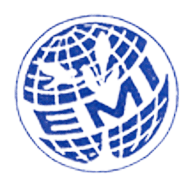TC1210 DustNet
TC1210 DustNet, a liquid dust suppressant, is a truly revolutionary product on the cutting edge of technology to reduce nuisance and respirable dust.
When used on silica sand, DustNet is applied at the rate of only forty (40) ounces per ton and reduces up to 97% of nuisance dust during handling and transportation and as much as 76% respirable-free silica during blasting.
DustNet has also been tested and has been proven to be equally effective with numerous other abrasives.
All properties have been highly refined and tested to give the most efficient results with the least amount of additives. The components of DustNet are so compatible that all ingredients stay in suspension indefinitely.
DustNet is impervious to extreme temperatures, making storage simple. DustNet will thicken somewhat in extremely cold temperatures but will not freeze. Hot climates have no apparent effect.
An analysis by gas chromatography/mass spectrometry using Environmental Protection Agency methods to determine the presence of any targeted toxic compounds, performed by Law Engineering Labs of Pensacola, Florida, found that "as used commercially in a diluted state, this product contains toxic compounds at less than detectable levels (two (2) parts per billion)."
DustNet is more than one thousand (1000) times less toxic
DustNet is more than one thousand (1000) times less toxic than commercial gasoline or diesel fuel. Other tests done by Data Chem Laboratories in Salt Lake City, Utah, using specifications of the USEPA Toxicity Characteristic Leaching Procedure (TLCP method 1311) for determining if a waste exhibits the characteristic of toxicity, found that "DustNet coated blast sand does not exhibit the characteristic of toxicity for TCLP volatiles and semi-volatiles.
therefore the proper use of DustNet does not create a waste product considered hazardous under the applicable regulations of the Resource Conservation and Recovery Act."
DustNet is not hazardous waste nor does it produce hazardous waste in use or manufacturing. Therefore, disposal of empty drums having contained DustNet is accomplished simply by recycling or rinsing, removing the top and bottom of the drum, and disposing of it at a locally regulated landfill.
The use of abrasives treated with DustNet does not result in the reduction of paint performance, according to tests done by KTA-TATOR of Pittsburgh, Pennsylvania. Commercial grade steel panels were blast cleaned with both the treated and untreated abrasives to achieve the SSPC-SP5 "White Metal" blast.
The panels were then coated with four different coatings (alkyd, epoxy, vinyl, and inorganic zinc), allowed to cure, and then subjected to a variety of tests including ASTM D-3359 adhesion, ASTM D-1308 water immersion, ASTM B-117 salt fog, ASTM D-714 blistering, ASTM D-610 overall rust, and ten cycles of freeze/thaw/immersion testing.
The subsequent test "failed to reveal any significant difference in paint performance between panels blast cleaned with coated abrasive versus uncoated abrasive."
The use of TC1210 DustNet will return sandblasting to the success once enjoyed by the industrial sand industry and, beyond, will increase revenue while providing customers with a quality product never before available, and serve in creating a safer workplace.
